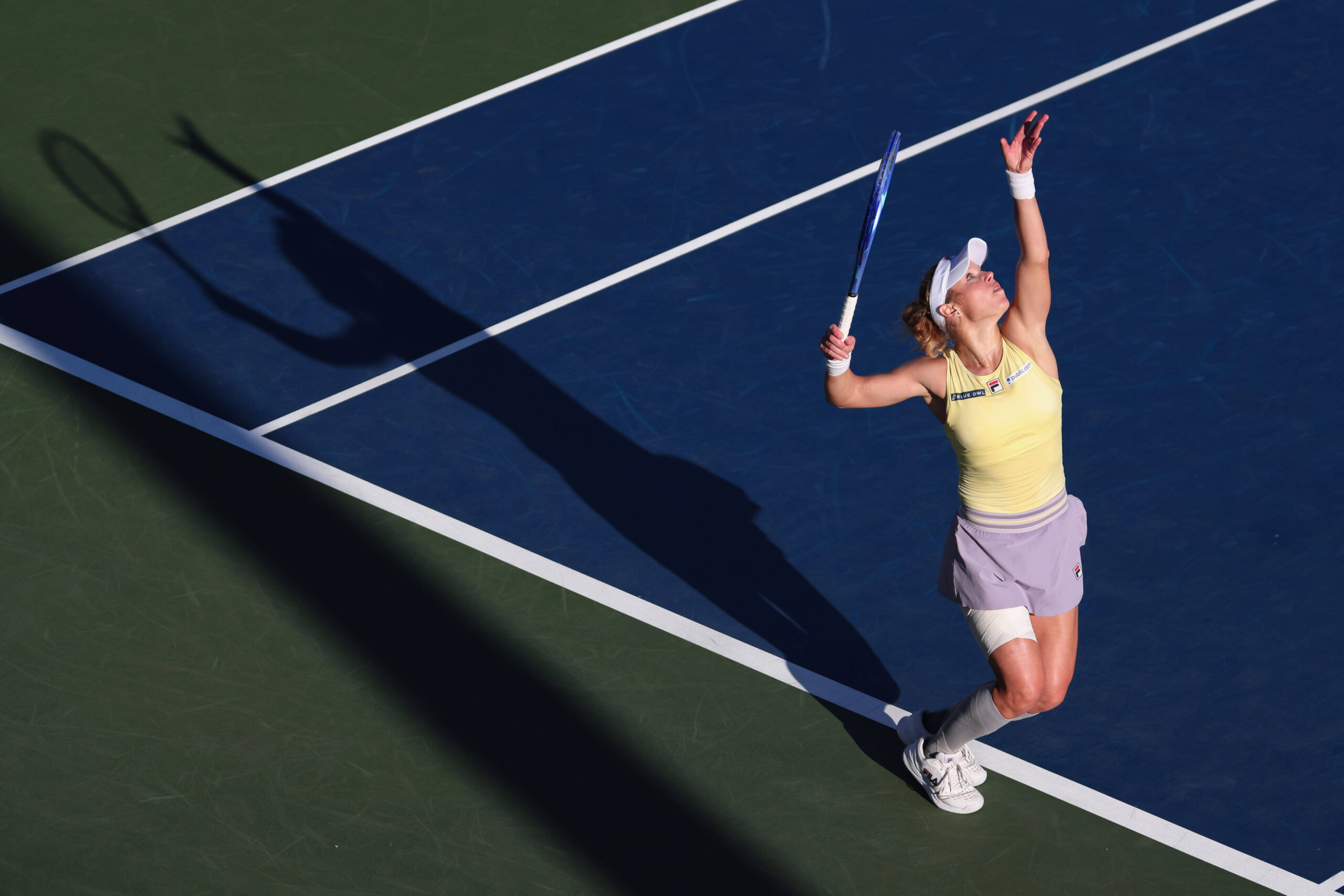Women at the US Open Are Making Serve-and-Volley Great Again

In the baseline-heavy era of modern tennis, serve-and-volley is often dismissed as a relic of the past. And yet, at the 2025 US Open, women are quietly proving otherwise. Through the first two rounds, the age-old strategy emerged with sonorous effectiveness. A handful of savvy women are quietly proving just how devastatingly effective it remains.
Female players in the first two rounds of the 2025 US Open attempted serve-and-volley just 58 times out of 20,940 possible chances, yet won 47 of them. That’s an astonishing 81% success rate right there! First-serve points won clocked in lower at around 73%, making serve-and-volley arguably the tournament’s most efficient weapon.
More impressively, only 28 of the 128 women tried it, yet 21 of them won 100% of their attempts—like Laura Siegemund, who was 5-for-5. Karolína Muchová and Priscilla Hon each attempted eight, converting five (about 63%) at the 2025 US Open. So, what helped the resurgence of the once-antiquated tactic?
Serve-and-Volley from other eras and corners
Martina Navratilova—a name often invoked when discussing serve-and-volley—is the epitome of the craft, having made the tactic almost the centerpiece of her thunderous career. Though rare in today’s game, serve-and-volley hasn’t completely died in the women's draw. A notable historical comparison: at the 2018 US Open, women attempted serve-and-volley only 84 times (less than 1% of points) yet still won 76% of those points. Serena Williams, for instance, approached the net five times in a semifinal and snagged four points. Remarkable, given the tactic’s rarity.

via Imago
Bildnummer: 13092959 Datum: 18.10.1982 Copyright: imago/Pressefoto Baumann Martina Navratilova (USA); ORD2303 Tennis yoh quer Porsche Grand Prix Filderstadt 1982 Damen Finale Sponsor, Werbepartner, Werbung, Wirtschaft Logo Firmenlogo Image number 13092959 date 18 10 1982 Copyright imago Baumann Martina Navratilova USA Tennis yoh horizontal Porsche Grand Prix Filderstadt 1982 women Final Sponsor sponsor Advertising Economy emblem Company logo
Karolína Muchová has made headlines both for her on-court composure and the rare but effective net approaches. Her eight attempts—winning five—demonstrate a willingness to mix tactics in pressure moments. Priscilla Hon, another standout, mirrors Muchová’s serve-and-volley frequency and success—eight ventures, five wins.
Karolína Plíšková is not a primary serve-and-volley player, but she has been known to surprise opponents. At the 2016 US Open final, she won a remarkable 80% of her serve-and-volley points—a glimpse into the tactic’s potential impact in big moments.
Why the sudden comeback at the 2025 US Open?
Element of surprise: Serve-and-volley is so uncommon now that opponents are seldom prepared for it. When executed with precision, it disrupts the rhythm of baseline patterns and puts instant pressure on returners.
High reward, low volume: Recent data shows that even a few well-timed serve-and-volley points can significantly shift momentum. An 81% success rate doesn’t just show efficiency—it demonstrates massive payoff for minimal risk.
Net comfort: Many WTA players, especially those with doubles experience (like Rybakina or Siegemund), retain sharp volley skills—yet often neglect them in singles. This data suggests those skills still hold tremendous utility when reintroduced infrequently.
Tactical variety: In a time of baseline battles, a sudden serve-and-volley offers variation. Players who occasionally mix in the move—Muchová, Hon—can keep opponents off balance and guessing.
A subtle tactical revolution
We shouldn’t expect serve-and-volley to regain the dominance it had in Navratilova’s or Sampras’s heyday—think dozens of attempts per match. But even in a few well-placed instances, it can tilt the scale. The 2025 US Open data isn’t a stylistic trend but a tactical reminder: vintage tools still work if used smartly.
If those 28 players can pull off such accuracy, imagine what could happen if more WTA stars dip into the net. The few players taking that step, Siegemund, Muchová, Hon, Plíšková, and Krejčíková, show that an intelligently timed volley can disrupt rhythm, shift pressure, and deliver standout points when the moment demands it.
As the tournament progresses, it’s worth tracking whether more contenders sneak a net approach into their strategy—if even a couple more do, they might just rewrite what success looks like in a Grand Slam’s modern age. Serve-and-volley may remain rare. But if the first two rounds of New York showed anything, it’s that rarity can turn into a weapon when used smartly.

